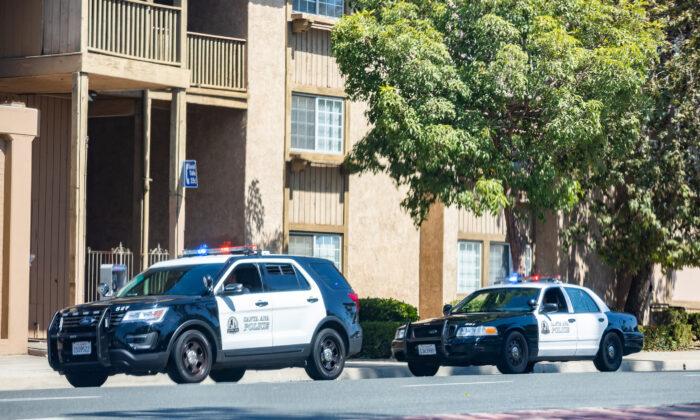Hate crimes in Orange County, California, are on the rise, according to an annual report released by the Orange County Human Relations Commission.
The report also showed that during the same time period hate incidents declined, from 165 incidents in 2018 to 156 in 2019.
Hate crimes are defined by California law as criminal acts that are motivated by disability, gender, nationality, race, religion, or sexual orientation. In comparison, hate incidents are noncriminal behaviors motivated by the same characteristics as the crimes, many of which are protected by the First Amendment right to free expression.
The Hate Crimes Report was developed using information gathered from 19 law enforcement agencies, 24 educational institutions, and 5 community-based organizations.
Michael Reynolds, chair of the Orange County Human Relations Commission, wrote that “in publishing this annual Hate Crime Report, we are confronted by the fact that hate crimes continue to rise.”
“We can—and we must—do better,” Reynolds stated. “It is our hope that this report will inform ongoing conversations in different spaces about the need to support hate victims and, as a community, to commit to treat one another as we individually would want to be treated.”
The report documented that the most frequently reported hate crimes in the county were those motivated by targeting a victim’s race, ethnicity, and/or national origin, which account for 47 percent overall.
Of those motivated by race, 53 percent—or 16 documented incidents—were committed against black people. Anti-Hispanic sentiment motivated 30 percent, or nine cases, of racially motivated hate crimes, while anti-Asian actions followed with 17 percent.
Hate crimes motivated by religion followed, accounting for 28 percent of the total. The Jewish population reported 11 documented incidents, or 52 percent of the crimes due to religion, while Catholics, Christians, and Muslims each accounted for 14 percent, or three cases apiece, of total religiously motivated crimes.
Hate crimes due to sexual orientation were next at 18 percent. In this category, 14 documented reports—or 78 percent—were due to anti-gay sentiments.
Nearly three-quarters of the hate incidents involved hate speech or harassment, according to the report. Religion, race or ethnicity, and sexual orientation or gender combined to motivate all of the incidents.
Orange County Board of Supervisors Chairwoman Michelle Steel addressed the audience during the webinar on the importance of the annual report.
“The county produces and publishes this hate crime report annually to increase awareness, strengthen hate crime prevention programming, and promote a tolerant community,” Steel said.
“Now more than ever, it is important for Orange County to come together and embrace our diversity. We must remain committed to respecting all people regardless of their background by identifying hate crimes and instances of racial, religious, and ethnic tensions.”
Brian Levin is the director and founder of the Center for the Study of Hate and Extremism at California State University–San Bernardino. He spoke at length during the presentation, breaking down the statistics.
“The increase in Orange County appears to be greater than what we’ve seen nationally,” Levin said.
The report indicates that the county has “more criminal mischief” than hate crimes, he said—“in fact, almost double the national data on criminal mischief.”
“For 2020, I think we’ve been seeing some interesting developments,” he said. “One is the significant surge in anti-Asian hate crime. It looks like, and I haven’t confirmed it but we’re gonna go back and check the data over decades, but it looks like this will be either a record or darn close to it for anti-Asian hate crimes.”
He noted the increase in anti-Asian sentiment was linked to the origin of COVID-19 being from China. “And this will probably impact Orange County, as you’ve seen before, because we have a larger representation of Asian-American people here in Orange County.”
Allie Edwards, CEO of the Orange County Humans Relations Commission, confirmed the importance of Levin’s analysis.
“I think that there are many people that would like to say that this is not happening or, you know, would find life easier if they can ignore this data,” Edwards said.
Orange County District Attorney Todd Spitzer emphasized his department’s willingness to stop hate crimes in the county and called the commission’s efforts “absolutely critical for our community.”
“In fact, it’s probably more important than ever. On this call, I have a whole group of prosecutors who are responsible for prosecuting the hate crimes in our county, and they understand unequivocally that ... I’ve been watching these trends, either as a county supervisor or as DA, and they’re completely unacceptable,” Spitzer told the audience.
“What is going on in this country, to me, is completely unacceptable. We all have the right and the privilege to live together and to coexist together, and we must respect our differences, and our diversity.”
Spitzer said that while it is the DA’s office that is responsible for prosecuting the cases and getting justice, he believes reported hate statistics are increasing not only because “there’s so much hate in our country,” but also because he and other prosecutors are “encouraging people to come forward.”
“We have a responsibility and a duty to take care of our society and provide a vision of how we want it to look,” the DA said, adding that all the people on the call “are monitoring this.”
“I know they care deeply about what we want our county to look like, and what we will accept and what we won’t tolerate,” he said.
The 2019 report also concluded that 37 percent of hate crimes took place in public places, followed by 18 percent in places of worship, 17 percent in residences, 13 percent on school campuses, and 12 percent at a business or place of work.
The most reported offense was vandalism, which accounted for 44 percent of hate crimes, followed by aggravated assault, which made up 22 percent.
Orange County has a population of 3.2 million, according to the report, of which 30 percent are foreign-born. Forty percent of county residents speak a language other than English at home, including approximately 25 percent who speak Spanish. The report added that over 80 faiths are practiced in the county.





